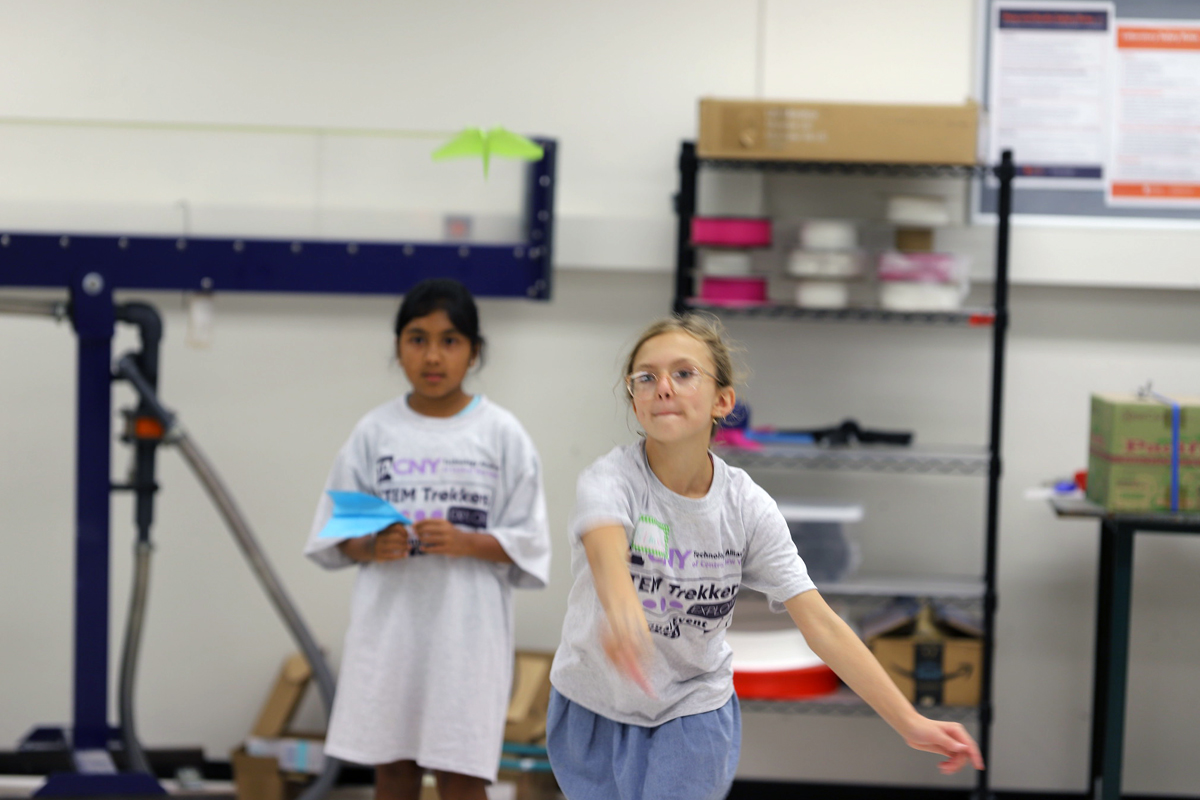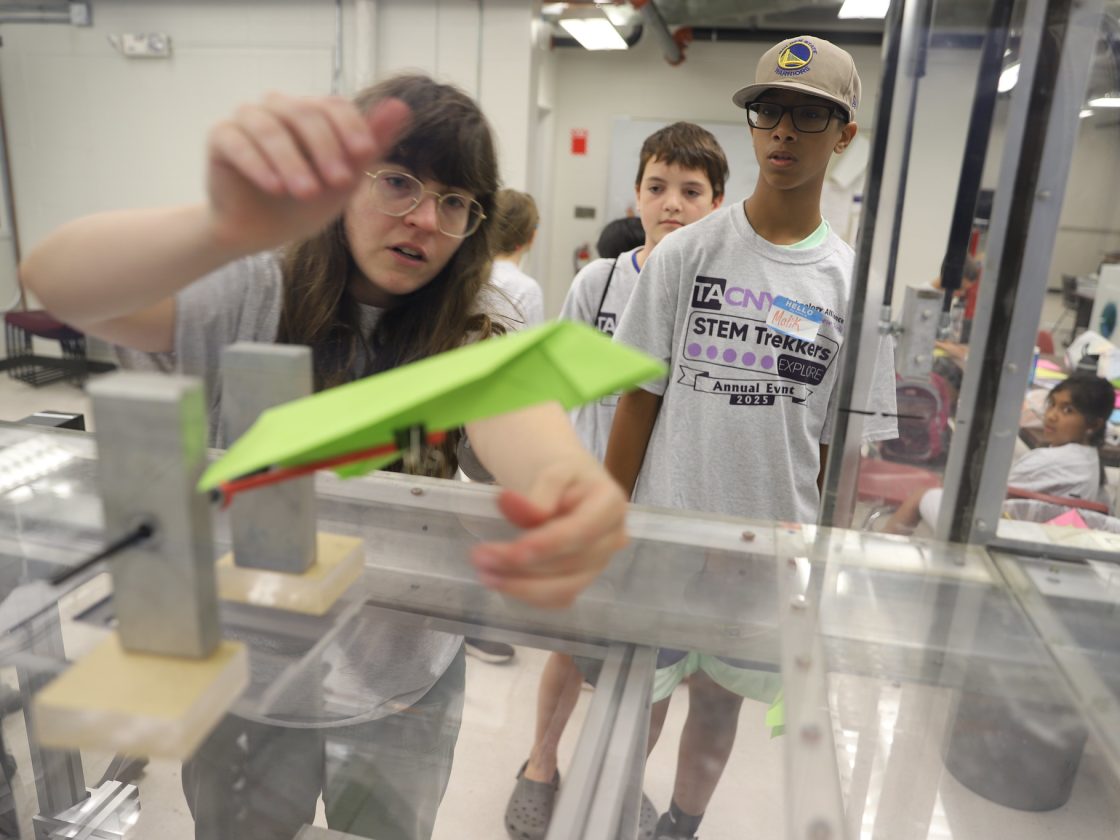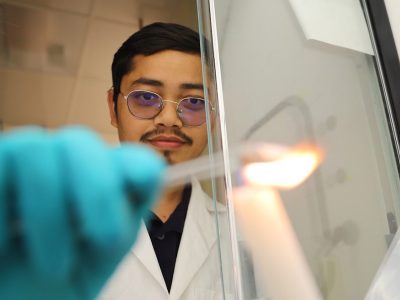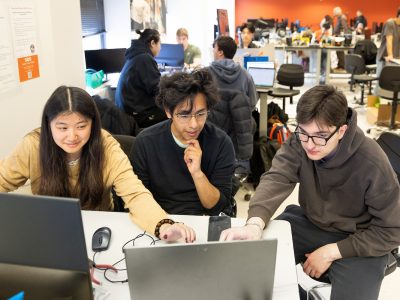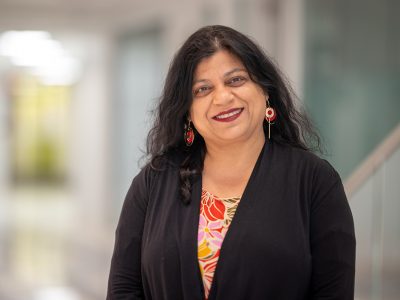A friendly competition is brewing in the corner of a basement classroom in Link Hall during the annual STEM Trekkers summer program, where students are participating in a time-honored ritual: seeing who can build a paper airplane that travels the farthest.
The children—in grades five through nine—take turns winding up and whipping their creations towards the double doors. Some models nosedive, while others glide effortlessly through the air. Two students manage to toss their airplanes 54 feet, drawing applause from their peers.
Their prize? A greater understanding of aerodynamics, including learning more about the why and how of flight. And plenty of smiles and laughter.
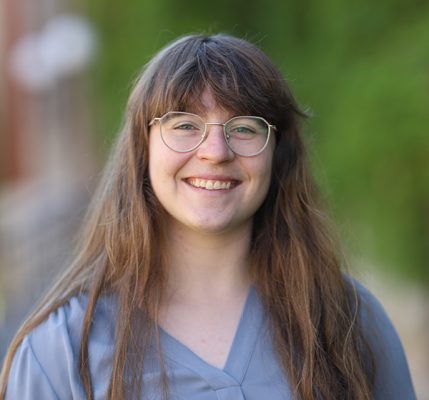
“When the kids are so immersed in the science behind building paper airplanes and trying out different models, it might seem like chaos, but they’re learning and the whole process is quite gratifying,” says Kasey Laurent, assistant professor of mechanical and aerospace engineering in the College of Engineering and Computer Science (ECS).
The three-day program is a collaboration between the nonprofit Technology Alliance of Central New York (TACNY) and ECS faculty and students. Children learn while having fun, which was the goal when Program Chair Sue Sobon came up with the STEM Trekkers program in 2021.
“I saw a need for our kids to be more hands-on with what they were learning. This program has strong ties to Syracuse University. Our students hear from professors and students in different fields. The kids learn that a STEM career is something they can pursue,” says Sobon, a science teacher at Pine Grove Middle School in the East Syracuse Minoa Central School district.
Sparking Early Interest in STEM
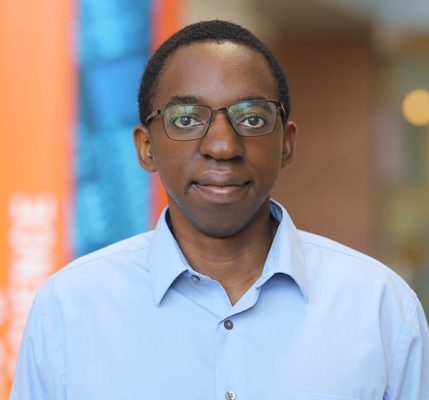
This year, 70 students from 11 districts participated in this free program. The topics covered included aerodynamics, plastics and polymers, nanotechnology, microplastics, microbiology and open-source data.
“Technology is so important in our daily lives, and I’m excited to introduce these students to areas that are growing in importance,” says Rodrick Kuate Defo, assistant professor of electrical engineering and computer science.
Among the ECS faculty who volunteered were Laurent, Kuate Defo, Yiyang Sun, assistant professor of mechanical and aerospace engineering, Venkata S.S. Gandikota, assistant professor of electrical engineering and computer science, and Eric Finkelstein and Lihong Lao with the BioInspired Institute.
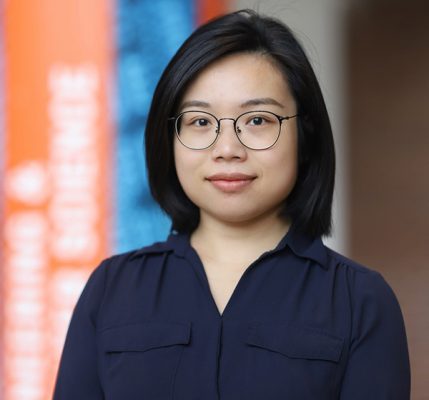
“We try to spark their STEM interest when they’re young so they can think about what it would take to study STEM in the future,” Sun says. “The research we do provides the students with a high-level understanding of the topics we’re teaching.”
The experiences working and learning alongside current Syracuse University students—utilizing the same facilities where these undergraduates conduct their research—motivate the students to want to become the next generation of STEM enthusiasts, Sun says.
“I feel excited when I see the kids getting excited and feeling inspired by this research. When they ask more about college life, the future of aerodynamics and what it takes to s쳮d in this career, that’s the most rewarding part,” Sun says.
Learning Lessons Beyond the Classroom
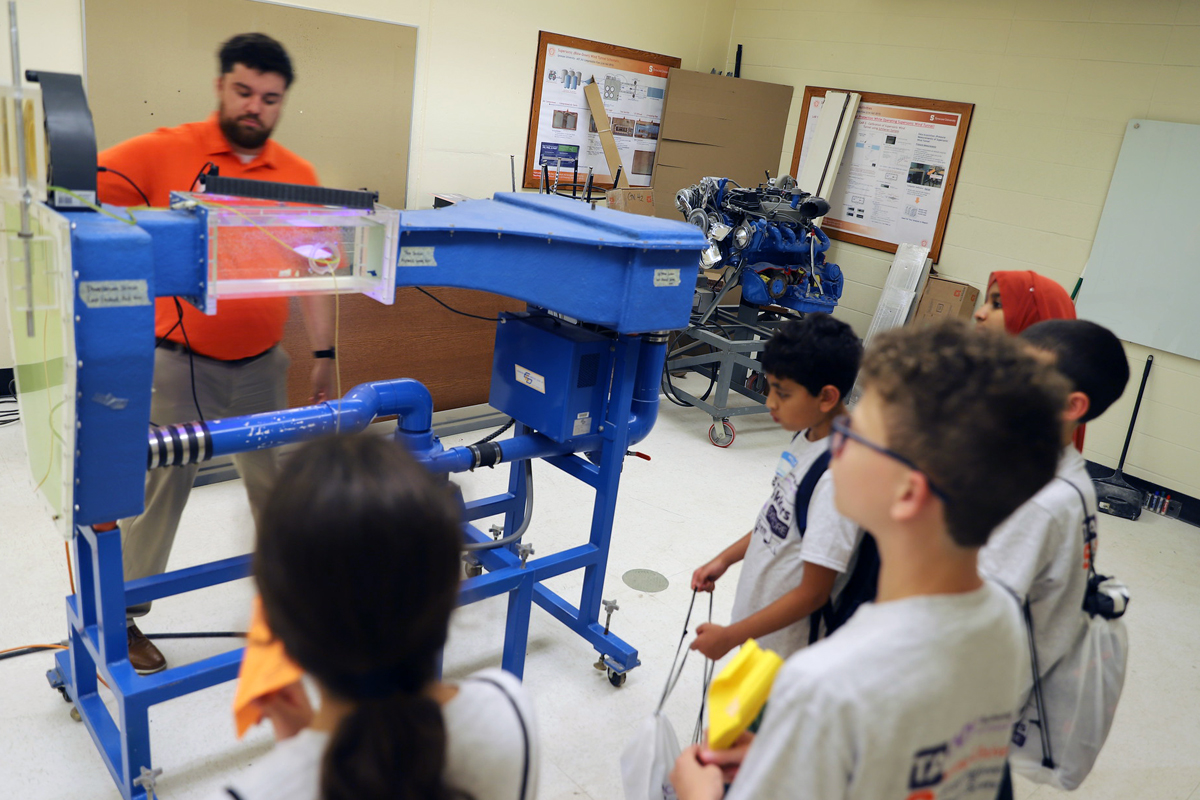
Besides sparking their interest in STEM, the program participants often find mentorship with their research instructors, forming a big brother/big sister type of relationship.
“By showing examples of students who have taken this path, the kids can realize that a STEM career is possible for them,” Kuate Defo says. “They can see themselves following this path. We want to spread the excitement by showing them cool examples of a particular scientific concept.”
The concepts extend beyond the lessons being taught, emphasizing the need for students to develop their critical thinking skills and begin to apply the lessons learned during the hands-on exercises to the science that is all around them.
“Since they know the science behind how to build paper airplanes, maybe they now can look at how birds can fly. These exercises present so many lessons for them to draw from,” Laurent says.
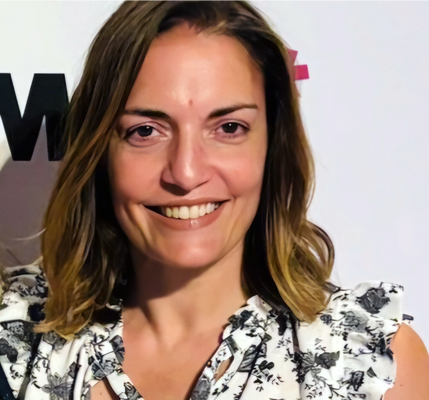
The opportunity to learn from professors across different industries in a collaborative environment that features lively lessons is incredibly helpful, as are the follow-up discussions that tie together that day’s lessons. The students leave each day feeling empowered to further their education, feeling like they are more connected to the subject material and feeling like a STEM career is an attainable goal.
“This is all about exposure. How will a child know if they’re good at something if they don’t get exposed to it?” Sobon says. “I want the kids to see everyone working together on these projects, and to know there’s always a space for them and a place for their interests.”
Sobon says the STEM Trekkers program connects with local businesses and agencies to demonstrate the different applications of STEM concepts in industry and in the community. This year’s community partners include Jason Scharf (deputy director) and Nicole Broadnax (program analyst) for the City of Syracuse’s department of information services; Monica Caves, research scientist and outreach coordinator with the Upstate Freshwater Institute; and Lisa Piering, environmental educator and recycling specialist with the Onondaga County Resource Recovery Agency.
